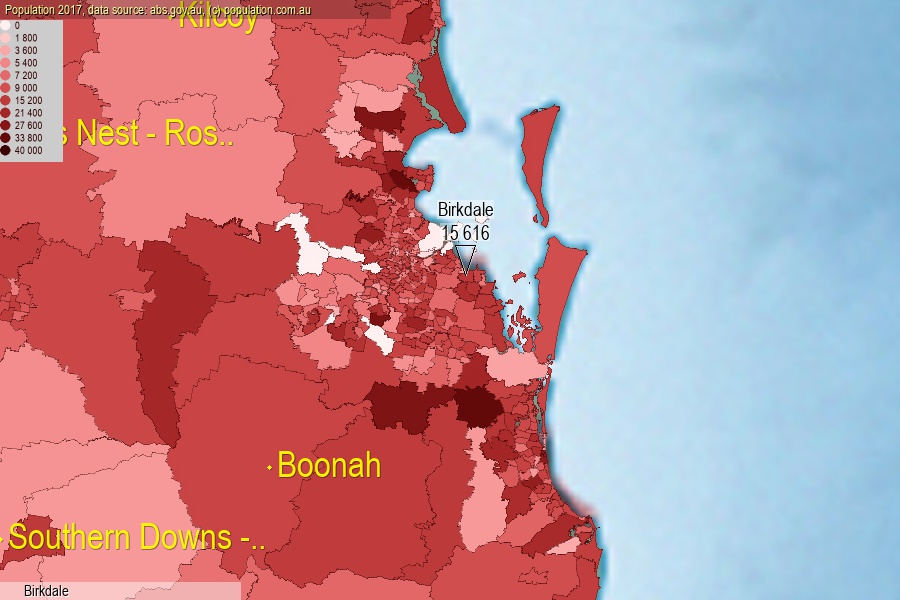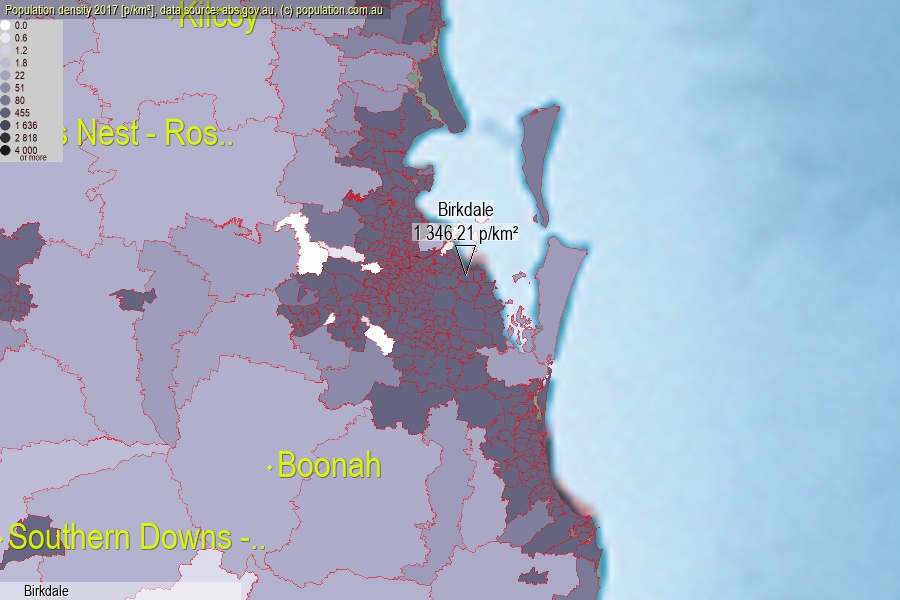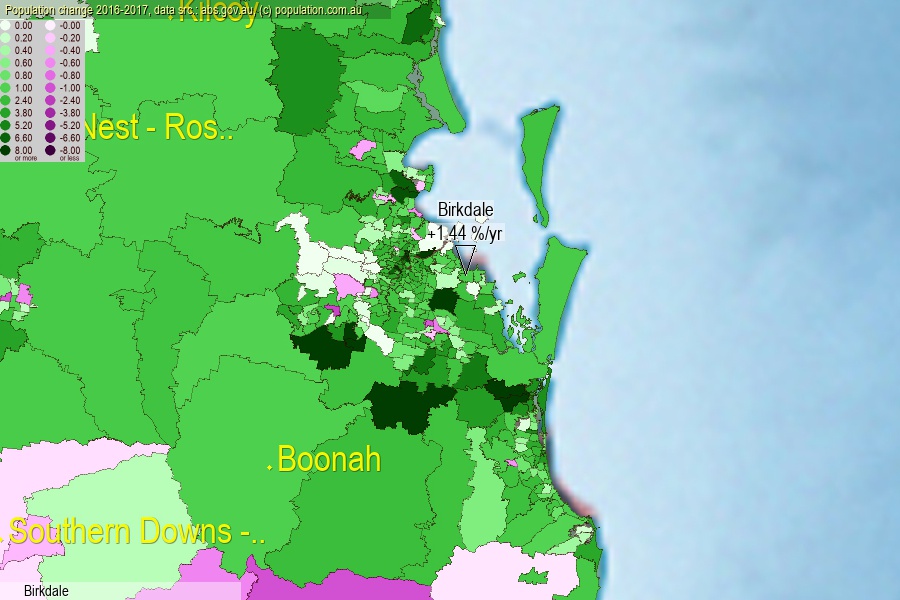 population.com.au
population.com.auLast official estimated population of Birkdale (as Statistical Area Level 2) was 15 616 people (on 2017-06-30)[2]. This was 0.06% of total Australian population and 0.313% of QLD population. Area of Birkdale is 11.60 km², in this year population density was 1 346.21 p/km² . If population growth rate would be same as in period 2016-2017 (+1.44%/yr), Birkdale population in 2025 would be 17 511. [0]



Click to enlarge. Birkdale is located in the center of the images.
Population [people], population density [p./km²] and population change [%/year] [2]
View borders » (new window) [4]
[1991-1992] +5.26 %/Yr.
[1992-1993] +6.31 %/Yr.
[1993-1994] +5.68 %/Yr.
[1994-1995] +4.03 %/Yr.
[1995-1996] +3.15 %/Yr.
[1996-1997] +2.22 %/Yr.
[1997-1998] +2.55 %/Yr.
[1998-1999] +4.45 %/Yr.
[1999-2000] +5.20 %/Yr.
[2000-2001] +3.42 %/Yr.
[2001-2002] +1.45 %/Yr.
[2002-2003] +2.12 %/Yr.
[2003-2004] +1.54 %/Yr.
[2004-2005] +0.53 %/Yr.
[2005-2006] +0.68 %/Yr.
[2006-2007] +0.42 %/Yr.
[2007-2008] -0.03 %/Yr.
[2008-2009] +1.35 %/Yr.
[2009-2010] +0.69 %/Yr.
[2010-2011] +0.75 %/Yr.
[2011-2012] +1.21 %/Yr.
[2012-2013] +0.93 %/Yr.
[2013-2014] +0.47 %/Yr.
[2014-2015] +0.39 %/Yr.
[2015-2016] +0.18 %/Yr.
[2016-2017] +1.44 %/Yr.
[0] Calculated with linear interpolation from officially estimated population
[1] Read more about SA2 and Australian Statistical Geography Standard (ASGS) on abs.gov.au
[2] Population data from Australian Bureau of Statistics (Population and density: 2017; change: 2016-2017)
[3] Digital Boundaries: Australian Statistical Geography Standard (ASGS) 2016.
[4] Border coordinates are simplifyed using Ramer-Douglas-Peucker algorithm.